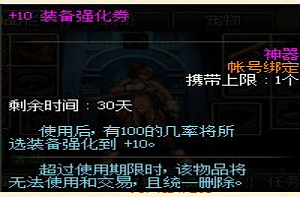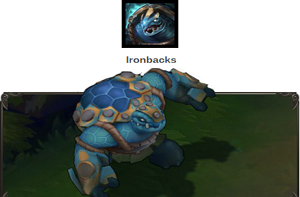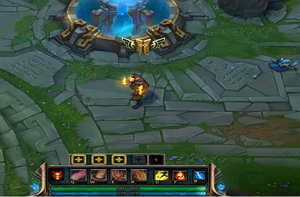相关资讯
本类常用软件
-

福建农村信用社手机银行客户端下载下载量:584204
-

Windows优化大师下载量:416896
-

90美女秀(视频聊天软件)下载量:366961
-

广西农村信用社手机银行客户端下载下载量:365699
-

快播手机版下载量:325855
这篇文章主要跟各位介绍到的是关于FileSystemObject处理文件,希望能给大家带来帮助。
有两种主要的文件处理类型:
创建、添加或删除数据,以及读取文件
移动、复制和删除文件
创建文件
创建空文本文件(有时被叫做“文本流”)有三种方法。
第一种方法是用 CreateTextFile 方法。 下面的示例示范了在 VBScript 中如何用这种方法来创建文本文件:
Dim fso, f1
Set fso = CreateObject("Scripting.FileSystemObject")
Set f1 = fso.CreateTextFile("c:\testfile.txt", True)
要在 JScript 中用这种方法,则使用下面的代码:
var fso, f1;
fso = new ActiveXObject("Scripting.FileSystemObject");
f1 = fso.CreateTextFile("c:\\testfile.txt", true);
请考察示例代码,来领会如何在 FileSystemObject 中使用 CreateTextFile 方法。
创建文本文件的第二种方法是,使用 FileSystemObject 对象的 OpenTextFile 方法,并设置 ForWriting 标志。在 VBScript 中,代码就像下面的示例一样:
Dim fso, ts
Const ForWriting = 2
Set fso = CreateObject("Scripting. FileSystemObject")
Set ts = fso.OpenTextFile("c:\test.txt", ForWriting, True)
要在 JScript 中使用这种方法来创建文本文件,则使用下面的代码:
var fso, ts;
var ForWriting= 2;
fso = new ActiveXObject("Scripting.FileSystemObject");
ts = fso.OpenTextFile("c:\\test.txt", ForWriting, true);
创建文本文件的第三种方法是,使用 OpenAsTextStream 方法,并设置 ForWriting 标志。要使用这种方法,在 VBScript 中使用下面的代码:
Dim fso, f1, ts
Const ForWriting = 2
Set fso = CreateObject("Scripting.FileSystemObject")
fso.CreateTextFile ("c:\test1.txt")
Set f1 = fso.GetFile("c:\test1.txt")
Set ts = f1.OpenAsTextStream(ForWriting, True)
在 JScript 中,则使用下面示例中的代码:
var fso, f1, ts;
var ForWriting = 2;
fso = new ActiveXObject("Scripting.FileSystemObject");
fso.CreateTextFile ("c:\\test1.txt");
f1 = fso.GetFile("c:\\test1.txt");
ts = f1.OpenAsTextStream(ForWriting, true);
添加数据到文件中
一旦创建了文本文件,使用下面的三个步骤向文件添加数据:
打开文本文件。
写入数据。
关闭文件。
要打开现有的文件,则使用 FileSystemObject 对象的 OpenTextFile 方法或 File 对象的 OpenAsTextStream 方法。
要写数据到打开的文本文件,则根据下表所述任务使用 TextStream 对象的 Write、WriteLine 或 WriteBlankLines 方法。
任务 方法
向打开的文本文件写数据,不用后续一个新行字符。 Write
向打开的文本文件写数据,后续一个新行字符。 WriteLine
向打开的文本文件写一个或多个空白行。 WriteBlankLines
请考察示例代码,来领会如何在 FileSystemObject 对象中使用 Write、WriteLine 和 WriteBlankLines 方法。
要关闭一个打开的文件,则使用 TextStream 对象的 Close 方法。
请考察示例代码,来领会如何在 FileSystemObject 中使用 Close 方法。
---------------------------------------------------------------
注意 新行字符包含一个或几个字符(取决于操作系统),以把光标移动到下一行的开始位置(回车/换行)。注意某些字符串末尾可能已经有这个非打印字符了。
---------------------------------------------------------------
下面的 VBScript 例子示范了如何打开文件,和同时使用三种写方法来向文件添加数据,然后关闭文件:
Sub CreateFile()
Dim fso, tf
Set fso = CreateObject("Scripting.FileSystemObject")
Set tf = fso.CreateTextFile("c:\testfile.txt", True)
' 写一行,并且带有新行字符。
tf.WriteLine("Testing 1, 2, 3.")
' 向文件写三个新行字符。
tf.WriteBlankLines(3)
' 写一行。
tf.Write ("This is a test.")
tf.Close
End Sub
这个示例示范了在 JScript 中如何使用这三个方法:
function CreateFile()
{
var fso, tf;
fso = new ActiveXObject("Scripting.FileSystemObject");
tf = fso.CreateTextFile("c:\\testfile.txt", true);
// 写一行,并且带有新行字符。
tf.WriteLine("Testing 1, 2, 3.") ;
// 向文件写三个新行字符。
tf.WriteBlankLines(3) ;
// 写一行。
tf.Write ("This is a test.");
tf.Close();
}
读取文件
要从文本文件读取数据,则使用 TextStream 对象的 Read、ReadLine 或 ReadAll 方法。下表描述了不同的任务应使用哪种方法。
任务 方法
从文件读取指定数量的字符。 Read
读取一整行(一直到但不包括新行字符)。 ReadLine
读取文本文件的整个内容。 ReadAll
请考察示例代码,来领会如何在 FileSystemObject 中使用 ReadAll 和 ReadLine 方法。
如果使用 Read 或 ReadLine 方法,并且想跳过数据的特殊部分,则使用 Skip 或 SkipLine 方法。read 方法的结果文本存在一个字符串中,该字符串可以显示在一个控件中,也可以用字符串函数(如 Left、Right 和 Mid)来分析,连接等等。
下面的 VBScript 示例示范了如何打开文件,和如何写数据到文件中并从文件读取数据:
Sub ReadFiles
Dim fso, f1, ts, s
Const ForReading = 1
Set fso = CreateObject("Scripting.FileSystemObject")
Set f1 = fso.CreateTextFile("c:\testfile.txt", True)
' 写一行。
Response.Write "Writing file <br>"
f1.WriteLine "Hello World"
f1.WriteBlankLines(1)
f1.Close
' 读取文件的内容。
Response.Write "Reading file <br>"
Set ts = fso.OpenTextFile("c:\testfile.txt", ForReading)
s = ts.ReadLine
Response.Write "File contents = '" & s & "'"
ts.Close
End Sub
下面的代码示范了在 JScript 中做同样的事:
function ReadFiles()
{
var fso, f1, ts, s;
var ForReading = 1;
fso = new ActiveXObject("Scripting.FileSystemObject");
f1 = fso.CreateTextFile("c:\\testfile.txt", true);
// 写一行。
Response.Write("Writing file <br>");
f1.WriteLine("Hello World");
f1.WriteBlankLines(1);
f1.Close();
// 读取文件的内容。
Response.Write("Reading file <br>");
ts = fso.OpenTextFile("c:\\testfile.txt", ForReading);
s = ts.ReadLine();
Response.Write("File contents = '" + s + "'");
ts.Close();
}
移动、复制和删除文件
FSO 对象模式各有两种方法移动、复制和删除文件,如下表所述。
任务 方法
移动文件 File.Move 或 FileSystemObject.MoveFile
复制文件 File.Copy 或 FileSystemObject.CopyFile
删除文件 File.Delete 或 FileSystemObject.DeleteFile
请考察示例代码,来领会在 FileSystemObject 中删除文件的两种方法。
下面的 VBScript 示例,在驱动器 C 的根目录中创建一个文本文件,向其中写一些信息,然后把它移动到 \tmp 目录中,并在 \temp 中做一个备份,最后把它们从两个目录中删掉。
要运行下面的示例,需要先在驱动器 C 的根目录中创建 \tmp 和 \temp 目录:
Sub ManipFiles
Dim fso, f1, f2, s
Set fso = CreateObject("Scripting.FileSystemObject")
Set f1 = fso.CreateTextFile("c:\testfile.txt", True)
Response.Write "Writing file <br>"
' 写一行。
f1.Write ("This is a test.")
' 关闭文件。
f1.Close
Response.Write "Moving file to c:\tmp <br>"
' 获取 C 的根目录(C:\)中的文件的句柄。
Set f2 = fso.GetFile("c:\testfile.txt")
' 把文件移动到 \tmp 目录。
f2.Move ("c:\tmp\testfile.txt")
Response.Write "Copying file to c:\temp <br>"
' 把文件复制到 \temp 目录。
f2.Copy ("c:\temp\testfile.txt")
Response.Write "Deleting files <br>"
' 获得文件当前位置的句柄。
Set f2 = fso.GetFile("c:\tmp\testfile.txt")
Set f3 = fso.GetFile("c:\temp\testfile.txt")
' 删除文件。
f2.Delete
f3.Delete
Response.Write "All done!"
End Sub
下面的代码示范了在 JScript 中做同样的事:
function ManipFiles()
{
var fso, f1, f2, s;
fso = new ActiveXObject("Scripting.FileSystemObject");
f1 = fso.CreateTextFile("c:\\testfile.txt", true);
Response.Write("Writing file <br>");
// 写一行。
f1.Write("This is a test.");
// 关闭文件。
f1.Close();
Response.Write("Moving file to c:\\tmp <br>");
// 获取 C 的根目录(C:\)中的文件的句柄。
f2 = fso.GetFile("c:\\testfile.txt");
// 把文件移动到 \tmp 目录。
f2.Move ("c:\\tmp\\testfile.txt");
Response.Write("Copying file to c:\\temp <br>");
// 把文件复制到 \temp 目录。
f2.Copy ("c:\\temp\\testfile.txt");
Response.Write("Deleting files <br>");
// 获得文件当前位置的句柄。
f2 = fso.GetFile("c:\\tmp\\testfile.txt");
f3 = fso.GetFile("c:\\temp\\testfile.txt");
// 删除文件。
f2.Delete();
f3.Delete();
Response.Write("All done!");

 DNF每日签到送豪
DNF每日签到送豪 lol7月神秘商店
lol7月神秘商店 LOL黑市乱斗怎么
LOL黑市乱斗怎么 LOL英雄成就标志
LOL英雄成就标志 骑自行车的正确
骑自行车的正确 在校大学生该如
在校大学生该如 微信朋友圈怎么
微信朋友圈怎么